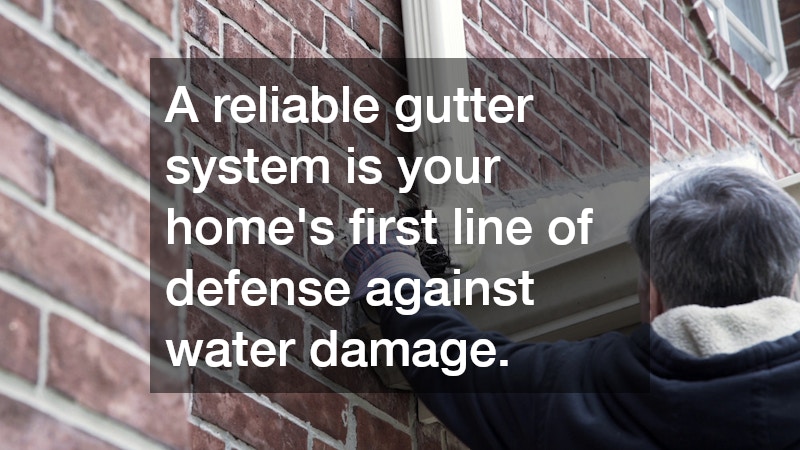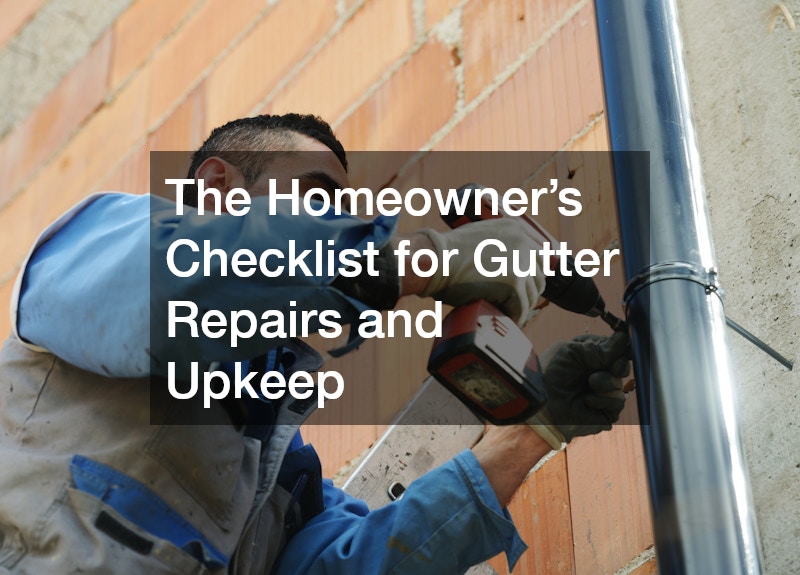Inspecting Your Gutters Regularly
The first step in any homeowner’s gutter care checklist is regular inspection. At least twice a year, usually in the spring and fall, walk around your property and look for visible signs of wear or damage. Overflowing gutters during rainfall are one of the clearest signs of a problem, as they indicate a clog or improper pitch. You should also check for sagging sections that might be pulling away from the roofline. This can happen when debris builds up and adds extra weight, or when brackets and fasteners loosen over time.
Another area to inspect closely is the joints and seams. These are common spots for leaks, which can lead to water running down your siding or pooling near your foundation. Even small cracks or separations can cause damage if left untreated. During your inspection, make sure your downspouts are also clear and properly connected. Downspouts that are disconnected or improperly angled can allow water to pool near the base of your home, threatening your foundation and landscaping.
Cleaning and Maintaining Gutters for Longevity
Cleaning your gutters is one of the most important maintenance tasks for preventing major gutter repairs later on. Leaves, twigs, and other debris can accumulate quickly, especially if your home is surrounded by trees. When this debris isn’t cleared, it can block the normal flow of water and cause gutters to overflow. Over time, standing water in the gutters can lead to rust or corrosion, weakening the material and shortening its lifespan.
For most homes, cleaning gutters twice a year is sufficient, though some homeowners may need to do it more frequently in heavily wooded areas. Using a sturdy ladder and gloves, remove all visible debris from the gutters, then flush the system with a garden hose to ensure smooth water flow. As you clean, take note of any problem areas, such as loose fasteners, holes, or sections pulling away from the fascia. Addressing these issues promptly can save you from needing extensive gutter repairs later.
It’s also worth considering installing gutter guards, especially if you struggle with constant clogs. While they don’t eliminate maintenance entirely, gutter guards significantly reduce the amount of debris that enters your system. This simple addition can cut your cleaning time in half and minimize the risk of blockages that lead to water damage.
Recognizing When Gutter Repairs Are Necessary
Even with consistent maintenance, there will be times when professional gutter repairs are necessary. Knowing the difference between a minor fix and a larger problem can help you act quickly and avoid expensive consequences. Small leaks can often be sealed with gutter caulk or patch kits, but extensive rust, multiple holes, or severe sagging may require replacing entire sections. If your gutters are older or made from outdated materials, upgrading to a more durable system like aluminum or copper might be the most cost-effective option in the long run.
Another issue that often requires professional attention is improper slope or alignment. Gutters should be slightly angled toward the downspouts to ensure efficient drainage. If they’re not, water can pool and overflow during heavy rain. A trained technician can realign the gutters and resecure brackets to restore proper function. For homeowners who notice persistent water pooling near their foundation, adding extensions to the downspouts may also be necessary to direct runoff safely away from the home.
In addition, if your home has experienced recent roof work or storm damage, it’s wise to have the gutters inspected as part of your repair process. Shingles, nails, or other debris from roof repairs can fall into the gutter system and cause blockages. Heavy winds or hail can also dent or misalign gutters, making them less effective at channeling water. Scheduling professional gutter repairs right after severe weather can prevent small problems from becoming major ones.
A reliable gutter system is your home’s first line of defense against water damage, but it only works as well as it’s maintained. Following a homeowner’s checklist for gutter repairs and upkeep helps you stay proactive, spot issues early, and maintain your home’s value. Whether you handle small tasks yourself or hire a professional for more complex repairs, regular attention to your gutters keeps your home safe, dry, and structurally sound for years to come.



